Know your uniforms: The seven regiments of the Household Division explained
The Household Division forms part of the British Army's London District and is made up of five regiments of foot guards and the Household Cavalry.
The division is responsible for delivering all state ceremonial and public duties and its troops played a key role in the King's coronation.
With the many different military uniforms on display, to the untrained eye, it can be hard to tell them apart, so Forces News has put together a handy guide so you can easily identify the different regiments on parade.
The five foot guards regiments include the Grenadier Guards, Coldstream Guards, Scots Guards, Irish and Welsh Guards. There are two mounted units within the Household Cavalry Regiment, the Life Guards and the Blues and Royals.
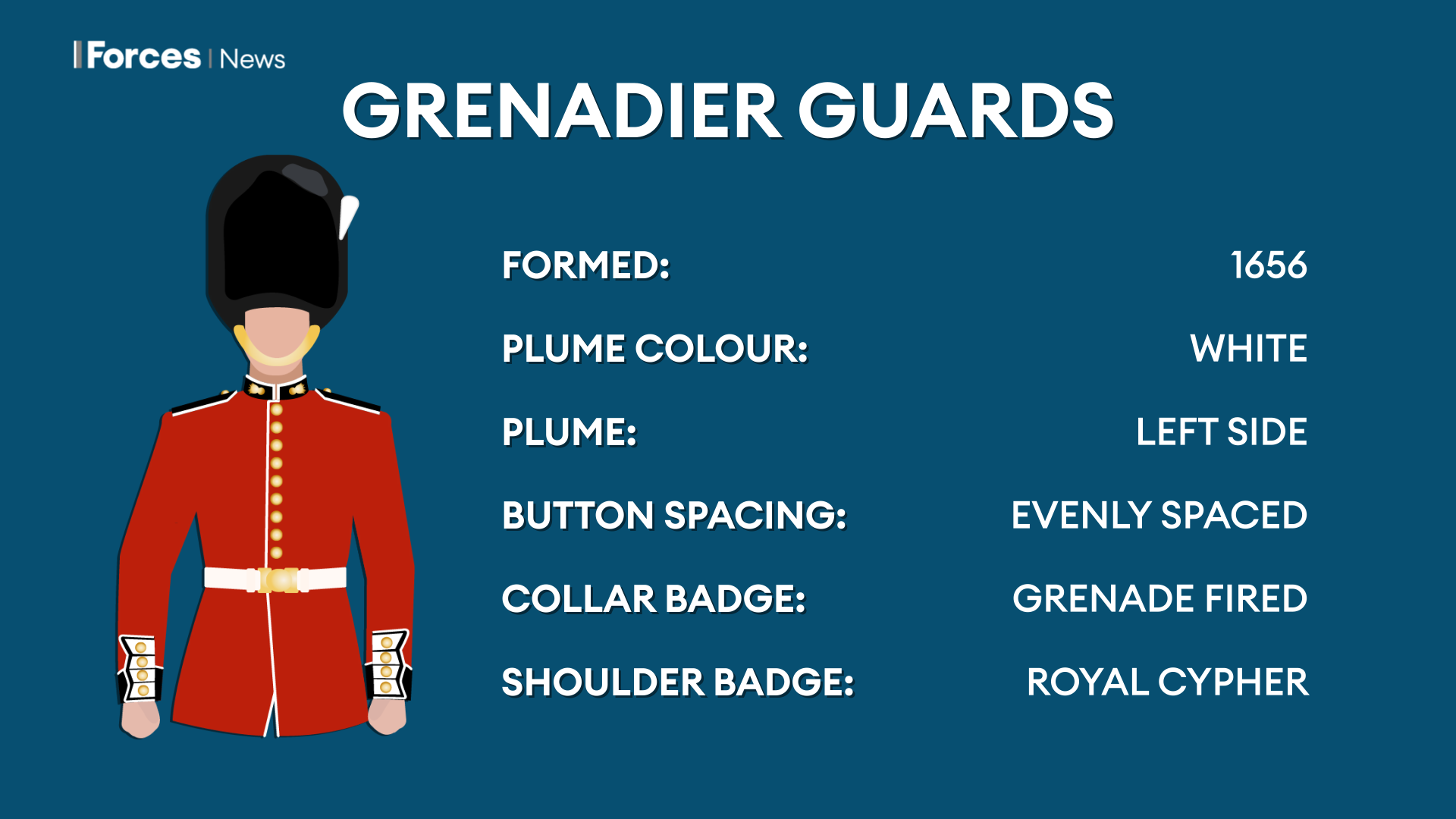
Grenadier Guards
The 1st or 'Grenadier' Regiment of Foot Guards was formed in Bruges in 1656 to protect King Charles II during his exile and was to become the King's Regiment of Foot Guards following the Restoration in 1660.
Members of the regiment wear a white plume made from horsehair and it is worn on the left side of their bearskin caps; officers' plumes are slightly larger.
Grenadiers' tunic buttons are spaced evenly, and they wear a 'grenade fired' on their collar and the Royal cypher on their epaulettes.
The regiment's motto is 'Honi soit qui mal y pense' – this is Old French and translates as "shame on him who thinks ill of it".
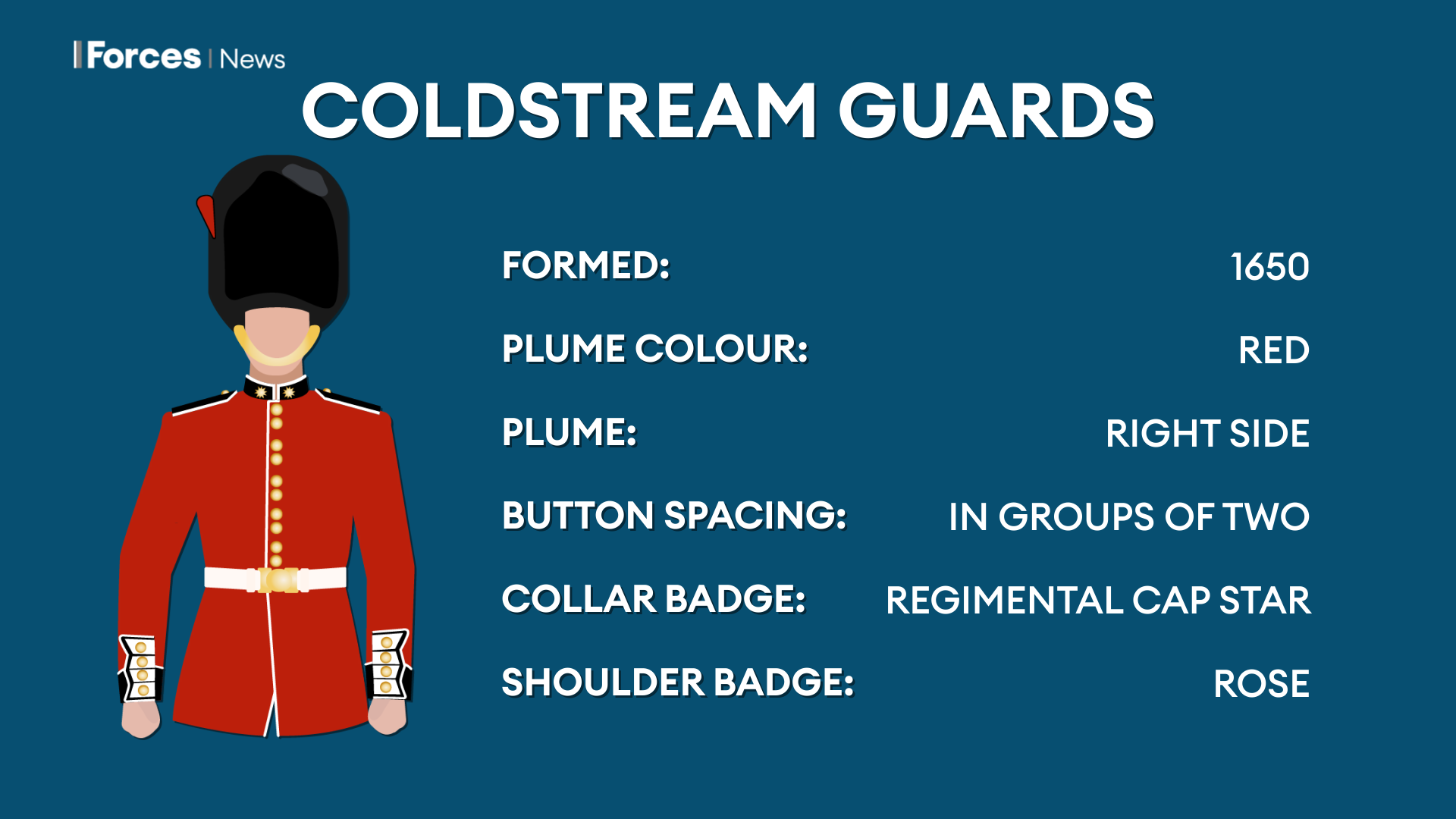
Coldstream Guards
The regiment was raised in June 1650 when Oliver Cromwell appointed George Monck to command a New Model Army Regiment.
It was 1659 when Monck's Regiment stayed in the town of Coldstream on the Scottish border. Prompted by widespread anarchy, Monck set out on 1 January 1660 to march his regiment to London.
The Coldstream Guards wear a red plume on the right side of their bearskin caps, officers and warrant officers wear red plumes which are much larger and made using feathers.
Members of the regiment wear their buttons spaced in twos. They also wear their regimental cap star on their collar and a rose on their shoulder.
The regimental motto is 'nulli secundus', meaning 'second to none'.

Scots Guards
The Scots Guards trace their origins back to 1642 when, by order of King Charles I, the regiment was raised by Archibald Campbell, 1st Marquess of Argyll, for service in Ireland, and was known as the Marquis of Argyll's Royal Regiment.
Members of the regiment do not wear a plume on their bearskin caps, because they are centre in the order of battle and therefore do not require a plume, which is used for identification purposes.
Members of the Scot Guards wear their buttons spaced in threes and wear the Scottish thistle on their collar. They also wear their regimental cap star on their shoulders.
Their regimental motto is 'nemo me impune lacessit', meaning 'no one assails me with impunity'.
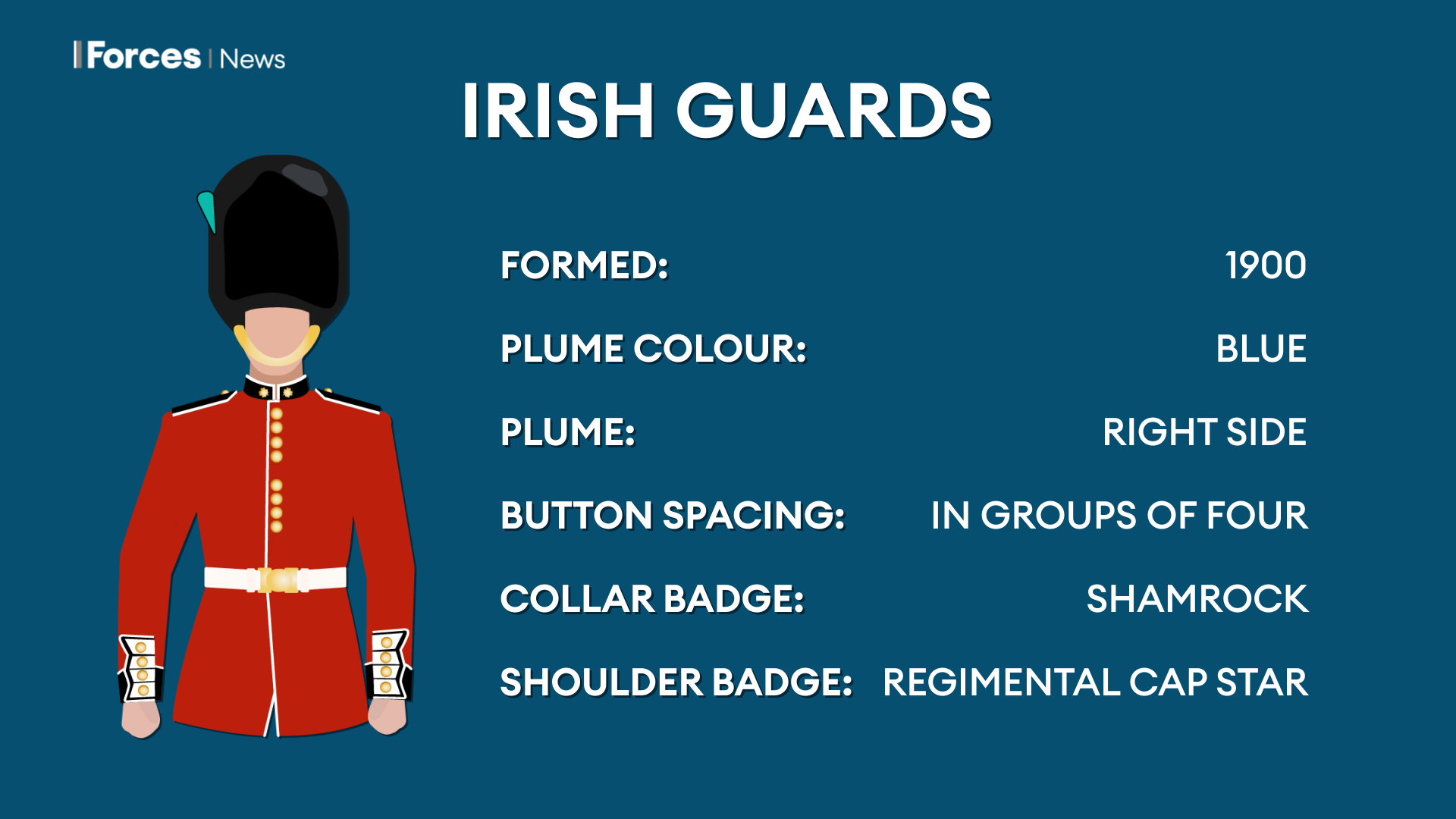
Irish Guards
The Irish Regiment of Foot Guards was raised on 1 April 1900 by command of Queen Victoria to commemorate the bravery shown by the Irish regiments in the South African Wars.
Soldiers wear a blue plume made from horsehair worn on the right side of their bearskin cap and officers wear larger plumes made from feathers.
Members of the Irish Guards have their buttons spaced in fours. They wear a shamrock on their collar and the regimental cap star on their shoulders.
Their regimental motto is the Latin question 'Quis separabit?', meaning 'who shall separate us.'
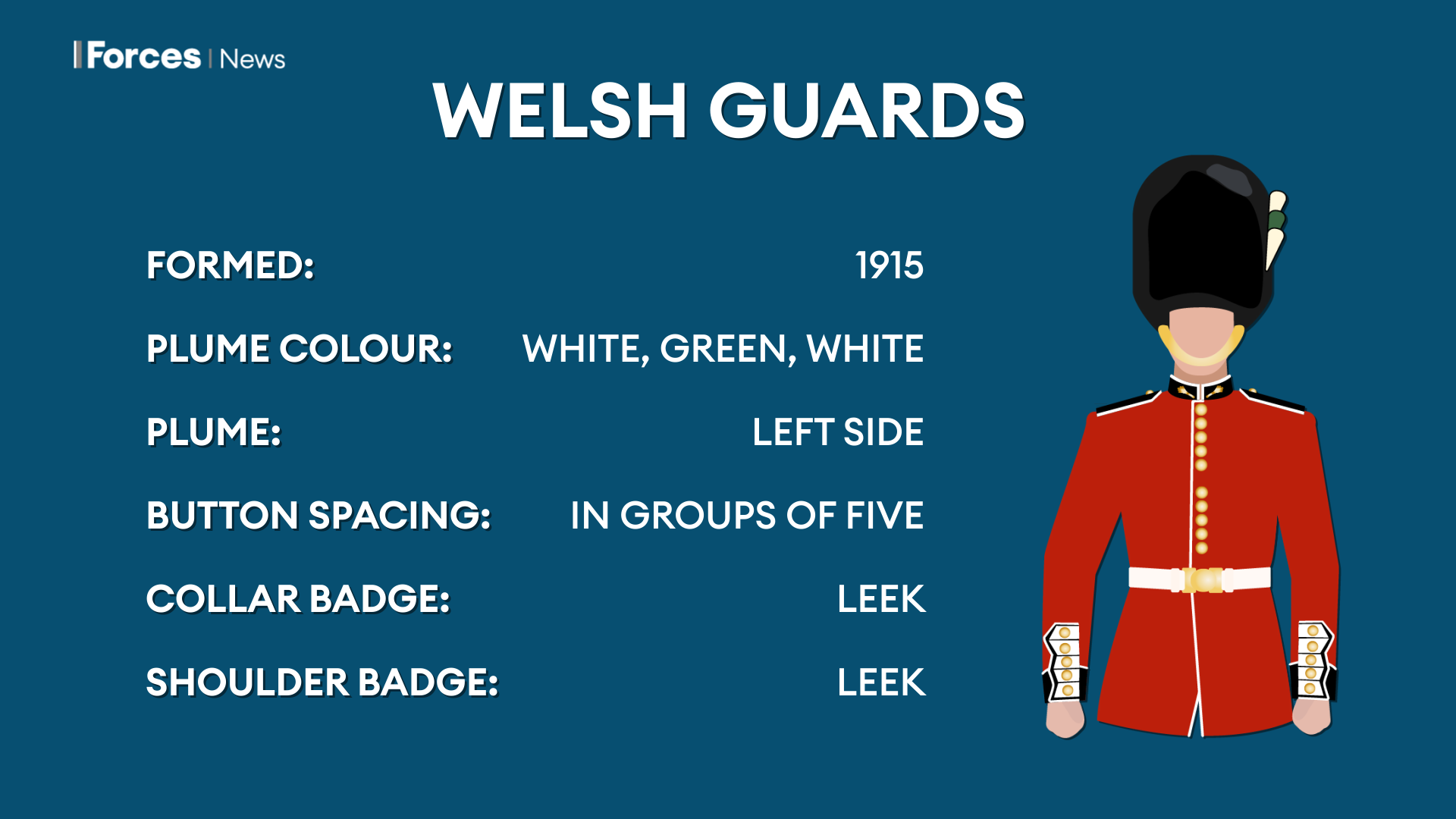
Welsh Guards
The Welsh Guards were formed in February 1915 and mounted their first King's Guard on St David's Day, 1 March.
Soldiers wear a mixed white and green plume made from horsehair, officers and warrant officers' plumes are made from feathers. They wear a leek on their epaulettes and collar. They also wear their buttons spaced in groups of five.
Their regimental motto is 'Cymru am byth', meaning 'Wales forever'.
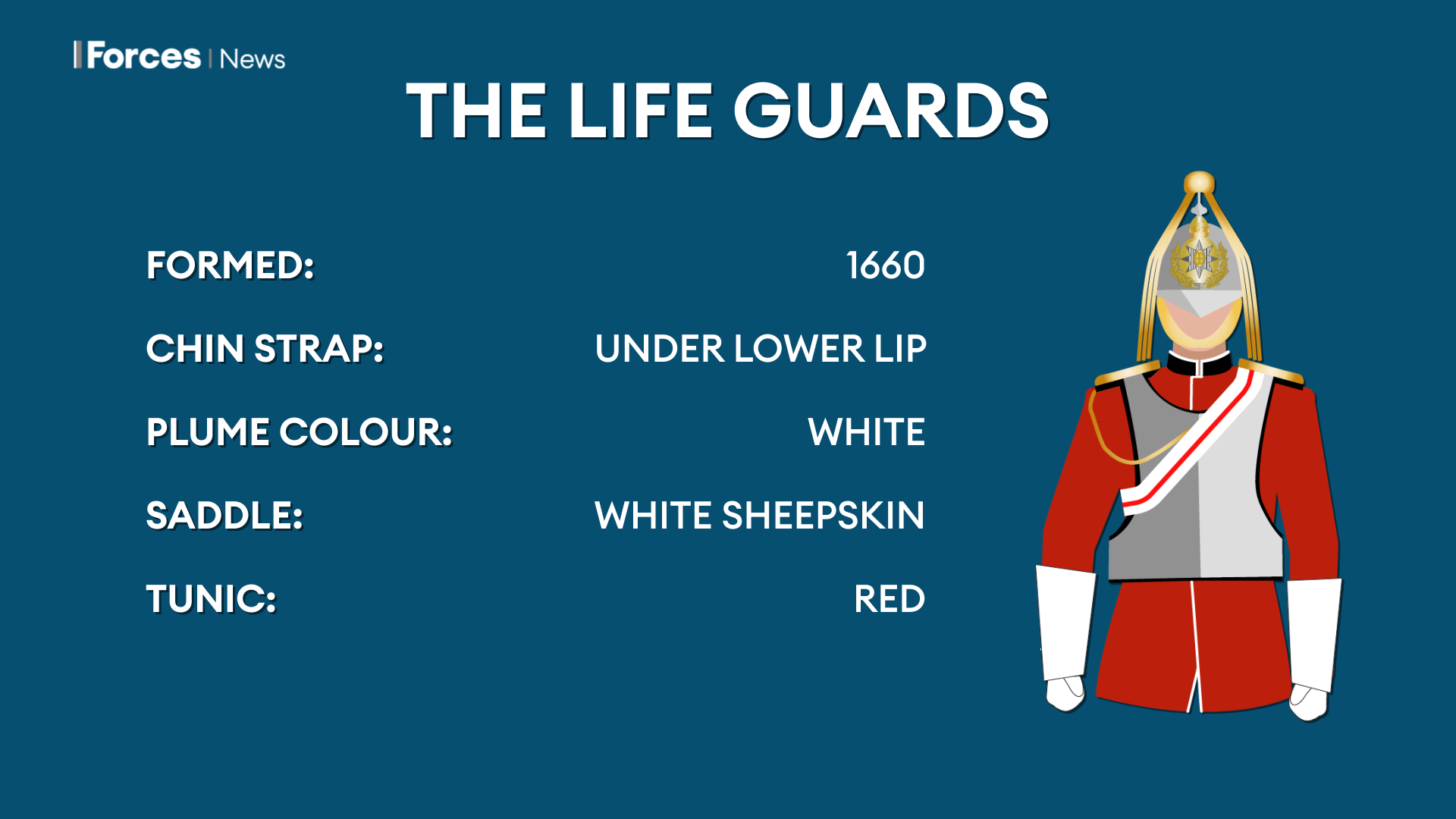
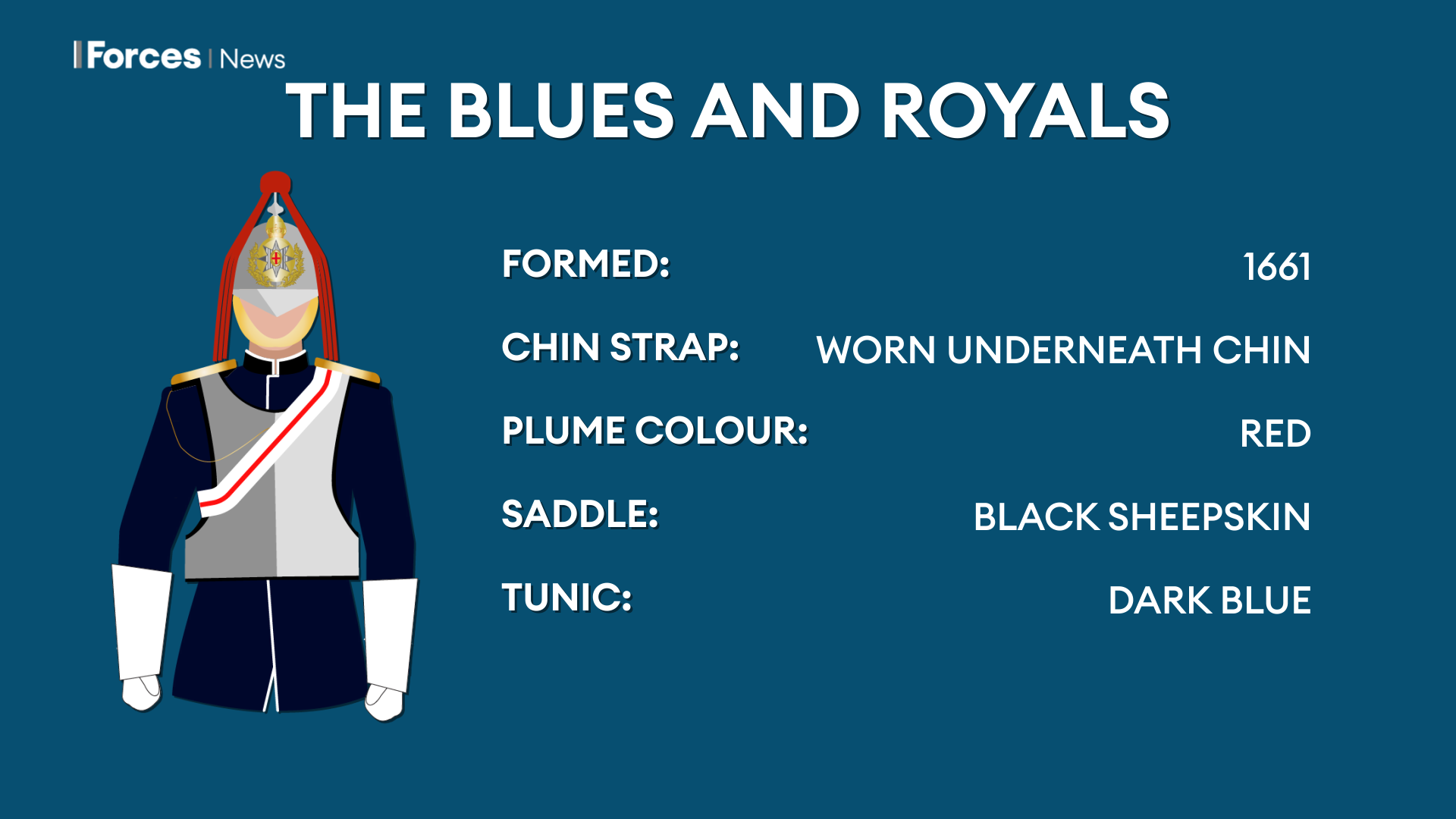
The Household Cavalry
The Household Cavalry Mounted Regiment is made up of The Life Guards, who formed the bodyguard of King Charles II while in exile and The Royal Horse Guards, now known as The Blues and Royals, who date back to being part of Cromwell's army.
Members of The Life Guards wear bright red tunics, white plumes in the helmets and white sheepskins over their saddles.
The Blues and Royals wear dark blue tunics, red plumes and black sheepskins over their saddles.
Also, the Life Guards place the strap of their helmets under the lower lip, while The Blues and Royals wear their helmet strap underneath the chin.
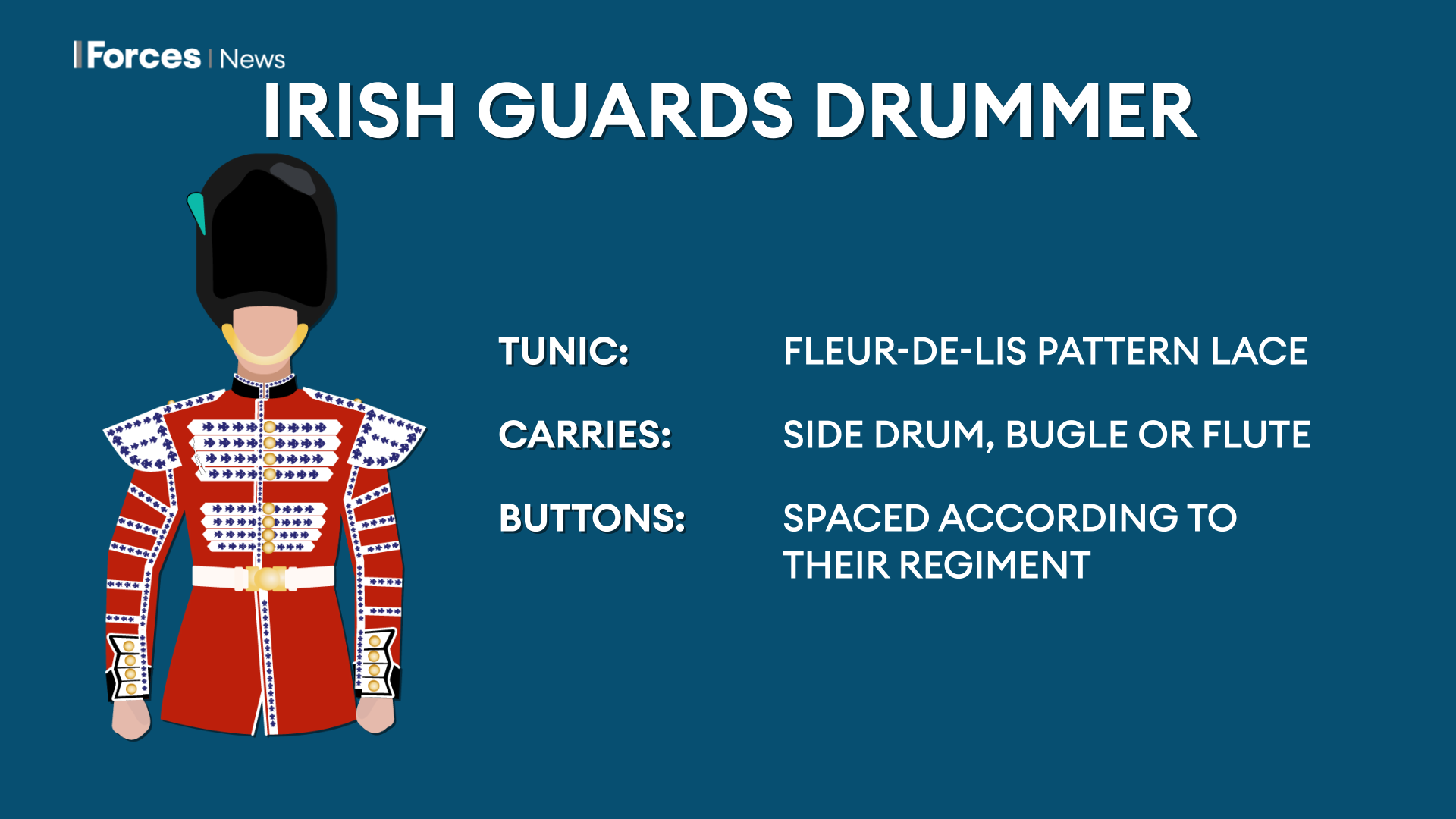
Drummers of the five foot guard regiments
Drummers wear their tunics covered in fleur-de-lis pattern lace, thought to be from when the King of England was also the King of France.
They carry either a side drum, bugle or flute and each drummer will wear their tunic buttons spaced according to their regiment, and also wear the same colour plume as their regiment.
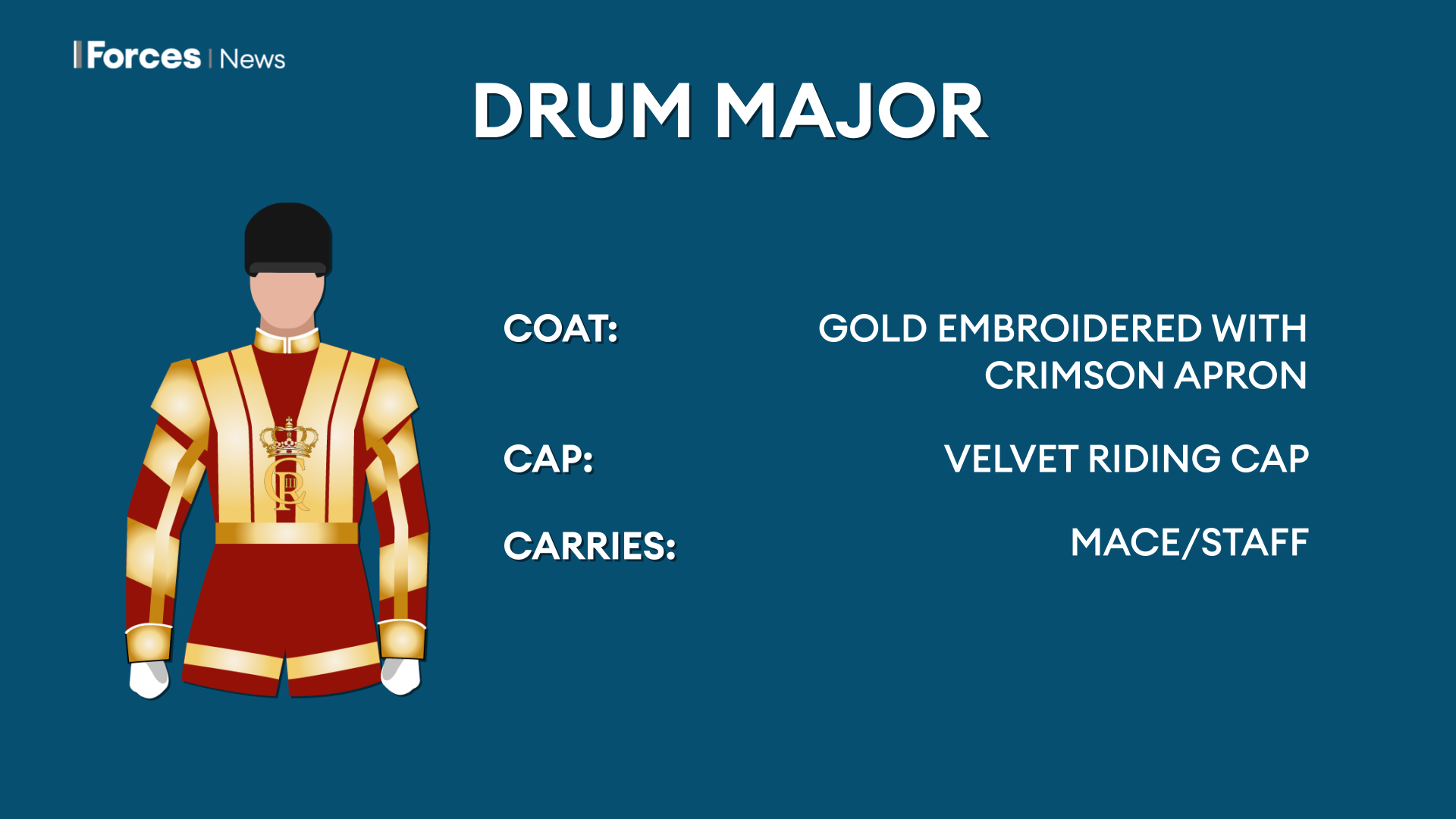
Drum Majors of the Household Division
Drum Majors lead the Household Division's drummers, buglers, bandsmen, and women.
State dress dates to the state musicians of the sovereign as far back as the 17th century. The intricate gold lace design on the coat, for example, dates to this era. They also wear a velvet riding cap. All drum majors carry a mace, known by some as a staff.
Each regiment's drum major will only wear state dress when the sovereign is present, on Royal birthdays and on major anniversaries during Changing the Guard. With the state dress, a crimson apron is also worn.









